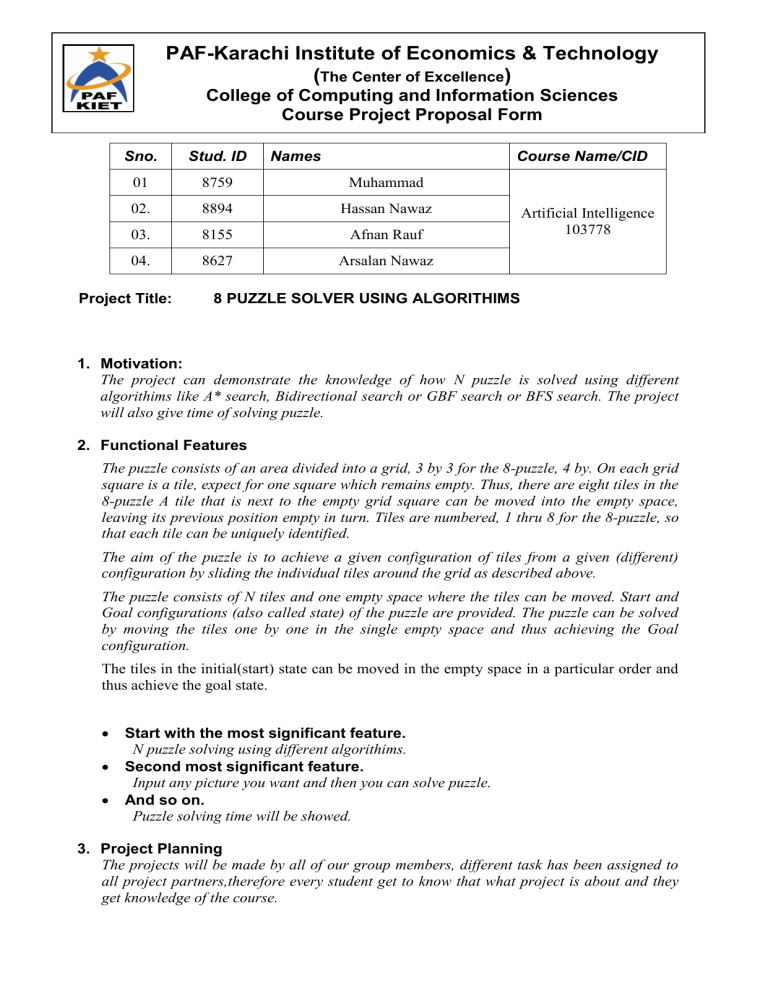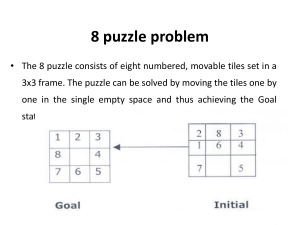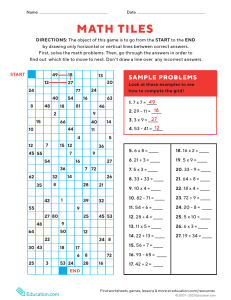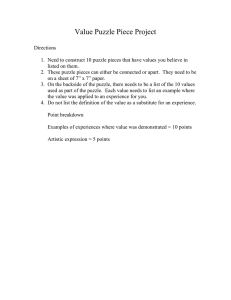
PAF-Karachi Institute of Economics & Technology (The Center of Excellence) College of Computing and Information Sciences Course Project Proposal Form Sno. Stud. ID 01 8759 Muhammad 02. 8894 Hassan Nawaz 03. 8155 Afnan Rauf 04. 8627 Arsalan Nawaz Project Title: Names Course Name/CID Artificial Intelligence 103778 8 PUZZLE SOLVER USING ALGORITHIMS 1. Motivation: The project can demonstrate the knowledge of how N puzzle is solved using different algorithims like A* search, Bidirectional search or GBF search or BFS search. The project will also give time of solving puzzle. 2. Functional Features The puzzle consists of an area divided into a grid, 3 by 3 for the 8-puzzle, 4 by. On each grid square is a tile, expect for one square which remains empty. Thus, there are eight tiles in the 8-puzzle A tile that is next to the empty grid square can be moved into the empty space, leaving its previous position empty in turn. Tiles are numbered, 1 thru 8 for the 8-puzzle, so that each tile can be uniquely identified. The aim of the puzzle is to achieve a given configuration of tiles from a given (different) configuration by sliding the individual tiles around the grid as described above. The puzzle consists of N tiles and one empty space where the tiles can be moved. Start and Goal configurations (also called state) of the puzzle are provided. The puzzle can be solved by moving the tiles one by one in the single empty space and thus achieving the Goal configuration. The tiles in the initial(start) state can be moved in the empty space in a particular order and thus achieve the goal state. Start with the most significant feature. N puzzle solving using different algorithims. Second most significant feature. Input any picture you want and then you can solve puzzle. And so on. Puzzle solving time will be showed. 3. Project Planning The projects will be made by all of our group members, different task has been assigned to all project partners,therefore every student get to know that what project is about and they get knowledge of the course. 4. Diagrammatic Representation of the Overall System Student’s Signature: ______________ Date: 13/04/2020


